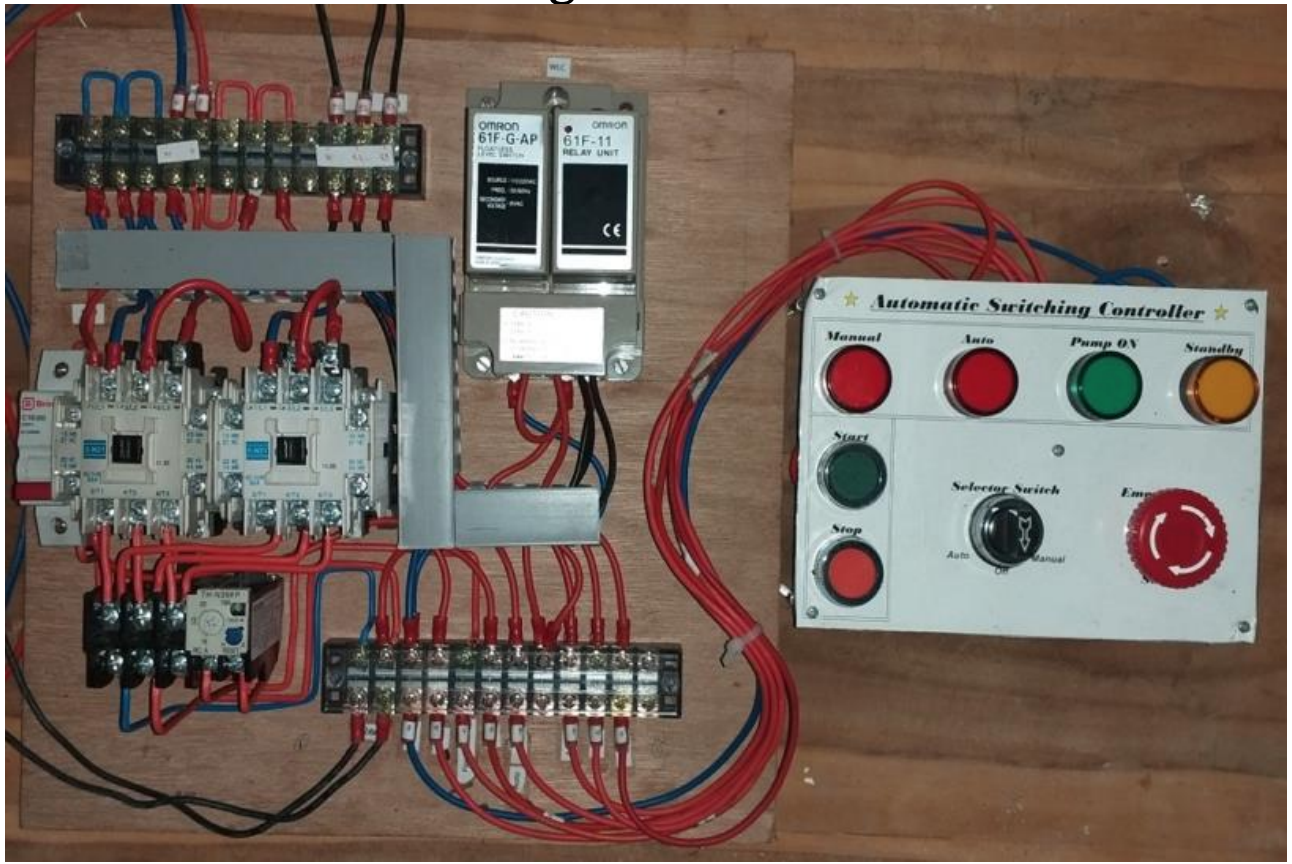Design and Implementation of Automatic Switching for Water Level Control of Community Water Supply
DOI:
https://doi.org/10.53017/uje.140Keywords:
Automatic switching, Water level, Storage system, Water supply systemAbstract
This paper presents design and implementation of Automatic Switching for controlling the water level in the reservoir of community water supply. The water supply system is energized by 2 sources i.e. power from utility grid and power generated by photovoltaic panels equipped with energy storage. The switching is based on the reservoir water level and determines the operation of submersible pump. The switching system employs electrode sensors in the water control level where 3 conditions are considered to control motor that drives the pump. The Automatic Switching is connected to Automatic Transfer Switch (ATS) that selects power sources to energize the pump, where it may be from the solar PV supported by storage system or from the grid. The selection is based on the remaining energy saved in the storage, when it is sufficient then it is used to energize the pump. Otherwise, the power from the grid is used to supply the pump. The combination of Automatic Switching and ATS determines when the pump is on and which power is taken to supply the pump. The manual system is complemented in the switching system to enable manual operation when the automatic system fails to work for some reason. The whole system is developed in a panel for easy operation and monitoring. The water level indicator is given in the panel for the purpose of adjusting the pump operation based on water level in the reservoir.
Downloads
References
S. Cole, “A political ecology of water equity and tourism. A Case Study From Bali.,” Annals of Tourism Research, vol. 39, no. 2, pp. 1221–1241, Apr. 2012, doi: 10.1016/J.ANNALS.2012.01.003.
V. A. Hamel, “Air Sebagai Entitas Keadilan: Refleksi Akademik Pendekatam Environmental Justice dalam Krisis Air di Bali,” Journal of Contemporary Public Administration (JCPA), vol. 1, no. 2, pp. 56–64, Dec. 2021, doi: 10.22225/JCPA.1.2.4257.56-64.
H. Taguchi and A. Asomiddin, “Energy-Use Inefficiency and Policy Governance in Central Asian Countries,” Energies 2022, Vol. 15, Page 1299, vol. 15, no. 4, p. 1299, Feb. 2022, doi: 10.3390/EN15041299.
A. Ulinuha, U. Hasan, W. Wijianto, and P. Studi Elektro, “Development of Self-Funded Water Supply for People of Sidomulyo, Sragen Using Deep Well with Submersible Pump,” Warta LPM, vol. 23, no. 2, pp. 105–114, Apr. 2020, doi: 10.23917/WARTA.V23I2.9761.
W. Charfi, M. Chaabane, H. Mhiri, and P. Bournot, “Performance evaluation of a solar photovoltaic system,” Energy Reports, vol. 4, pp. 400–406, Nov. 2018, doi: 10.1016/J.EGYR.2018.06.004.
V. Sharma and S. S. Chandel, “Performance and degradation analysis for long term reliability of solar photovoltaic systems: A review,” Renewable and Sustainable Energy Reviews, vol. 27, pp. 753–767, Nov. 2013, doi: 10.1016/J.RSER.2013.07.046.
H. L. Wang, ; Hu, ; Yang, and C. Wang, “PERFORMANCE DIFFERENCES OF ELECTRICAL SUBMERSIBLE PUMP UNDER VARIABLE SPEED SCHEMES,” Int j simul model, vol. 20, pp. 76–86, 2021, doi: 10.2507/IJSIMM20-1-544.
T. Luna, J. Ribau, D. Figueiredo, and R. Alves, “Improving energy efficiency in water supply systems with pump scheduling optimization,” Journal of Cleaner Production, vol. 213, pp. 342–356, Mar. 2019, doi: 10.1016/J.JCLEPRO.2018.12.190.
Y. Fan et al., “Scientific and technological progress and future perspectives of the solar assisted heat pump (SAHP) system,” Energy, vol. 229, p. 120719, Aug. 2021, doi: 10.1016/J.ENERGY.2021.120719.
S. Bipasha Biswas and M. Tariq Iqbal, “Solar Water Pumping System Control Using a Low Cost ESP32 Microcontroller,” Canadian Conference on Electrical and Computer Engineering, vol. 2018-May, Aug. 2018, doi: 10.1109/CCECE.2018.8447749.
S. S. Siddula, P. Babu, and P. C. Jain, “Water Level Monitoring and Management of Dams using IoT,” Proceedings - 2018 3rd International Conference On Internet of Things: Smart Innovation and Usages, IoT-SIU 2018, Nov. 2018, doi: 10.1109/IOT-SIU.2018.8519843.
P. Su, “Strong stabilization of a linearized gravity-capillary water waves system in a tank*,” pp. 6194–6199, Feb. 2022, doi: 10.1109/CDC45484.2021.9683269.
J. Koko, A. Riza, and U. K. M. Khadik, “Design of solar power plants with hybrid systems,” IOP Conference Series: Materials Science and Engineering, vol. 1125, no. 1, p. 012074, May 2021, doi: 10.1088/1757-899X/1125/1/012074.

Downloads
Published
How to Cite
Issue
Section
License
Copyright (c) 2022 Agus Ulinuha, M. Rusdi Wibowo

This work is licensed under a Creative Commons Attribution-NonCommercial 4.0 International License.





